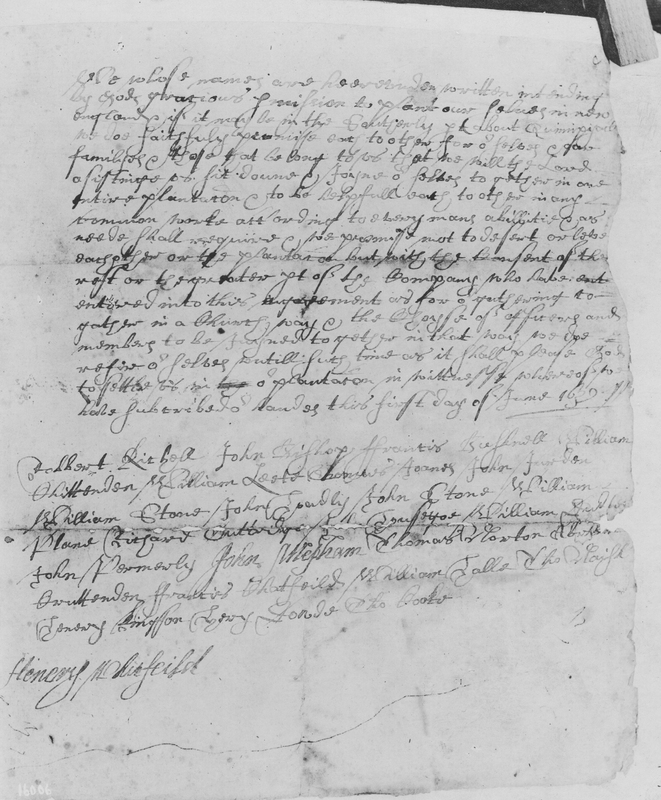On June 1, 1639, more than a month before Guilford’s founders reached the New England shore, 25 Puritan men bound their lives to each other in a Covenant, setting forth their vision for the community they would create together. Aboard the English ship St. John, these men signed their names to a document that stated their intentions to settle with their families as a group near the plantation of Quinnipiack (later New Haven), and to help each other survive and prosper in the New World. The Covenant states:
We whose names are hereunder written, intending by God’s gracious permission to plant ourselves in New England, and if it may be, in the southerly part about Quinnipiack, we do faithfully promise each to other, for ourselves and our families and those that belong to us, that we will, the Lord assisting us, sit down and join ourselves together in one entire plantation and to be helpful each to other in any common work, according to every man’s ability and as need shall require, and we promise not to desert or leave each other or the plantation, but with the consent of the rest, or the greater part of the company who have entered into this engagement. As for our gathering together in a church way and the choice of officers and members to be joined together in that way, we do refer ourselves until such time as it shall please God to settle us in our plantation. In witness whereof we have subscribed our hands this first day of June 1639
Robert Kitchell John Stone Francis Chatfield
John Bishop William Plane William Halle
Francis Bushnell Richard Guttridge Thomas Naish
William Chittenden John Housegoe Henry Kingnoth
William Leete William Dudley Henry Doude
Thomas Jones John Permewly Thomas Cooke
John Jordan John Mepham Henry Whitfield
William Stone Thomas Norton
John Hoadly Abraham Cruttenden
Many of the men who signed this Covenant are tied to the present in numerous ways. Their surnames are common, from Guilford’s phone book, to its cemeteries, to the names of its buildings and streets.
Perhaps more importantly, the sentiment of this historic pact—the intentional creation of community and care for all within it—endures in Guilford. Not every decision or action has measured up to the vision articulated in the Covenant. More often than not, however, the communal spirit and forethought embodied in the Covenant still shine in Guilford today.
Part of the Covenant that is deeply engrained in the community is caring for and helping “each to the other… according to every man’s ability and as need shall require.” The early Abolitionist Society, the Underground Railroad, and the celebration of Covenant Day on the Green to dissuade a Ku Klux Klan rally are historic examples of Guilford’s compassion for equality. Through time, numerous other socially responsible programs have borne out this ideal, including Guilford Daycare, which has served the community since the 1960s, the Guilford Food Bank, and the ABC (A Better Chance) program for girls.
The original Covenant survives in the care of the Massachusetts Historical Society, one of only a handful of early colonial documents of such significance. In June of 2014, 375 years after the original shipboard Covenant was signed, a 24-foot pink Stony Creek granite tablet with the Covenant inscribed upon it was dedicated at Covenant Point in Guilford.
“The Guilford Covenant,” (1639) Guilford Free Library Archives
